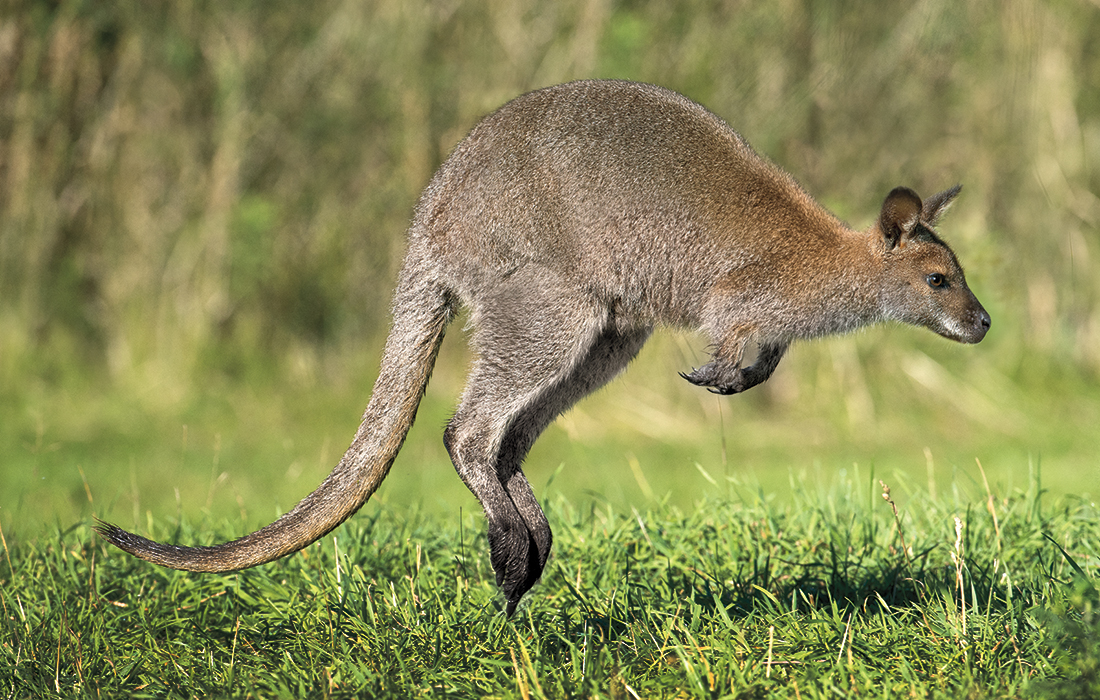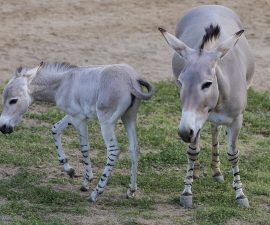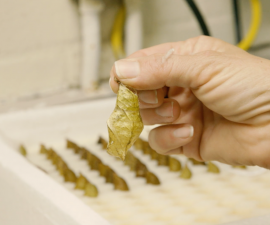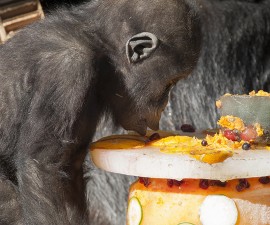BY Karen Worley
Photography by Ken Bohn
Australia is an extraordinary place. It is the world’s largest island, and the only island that is also a continent. It’s also the only continent that is a country—the sixth largest country in the world. Plus, it’s very old—it hasn’t changed much, geologically speaking, in 60 million years, since the mountains of the Great Dividing Range formed. Some of the most ancient objects found on Earth have come from Australia.
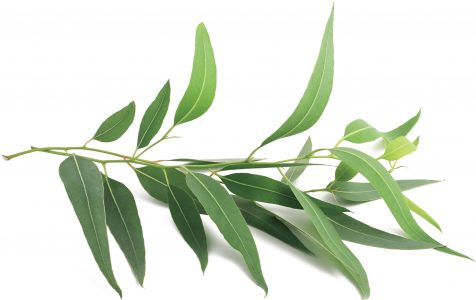
Having separated from other land masses a long time ago, this continent country can also lay claim to some of the most fascinating, unique, and downright weird wildlife in the world. And these species exist, persist, and even thrive in some of the most difficult and inhospitable habitats to be found. Along with the people who have made Australia home, these animals and plants live in a delicate balance between extremes, of heat and cold, rain and drought, abundance and scarcity. This is a land worthy of admiration, and the Safari Park’s new Walkabout Australia, opening May 25, 2018, provides a snapshot of some of the wonders found Down Under.
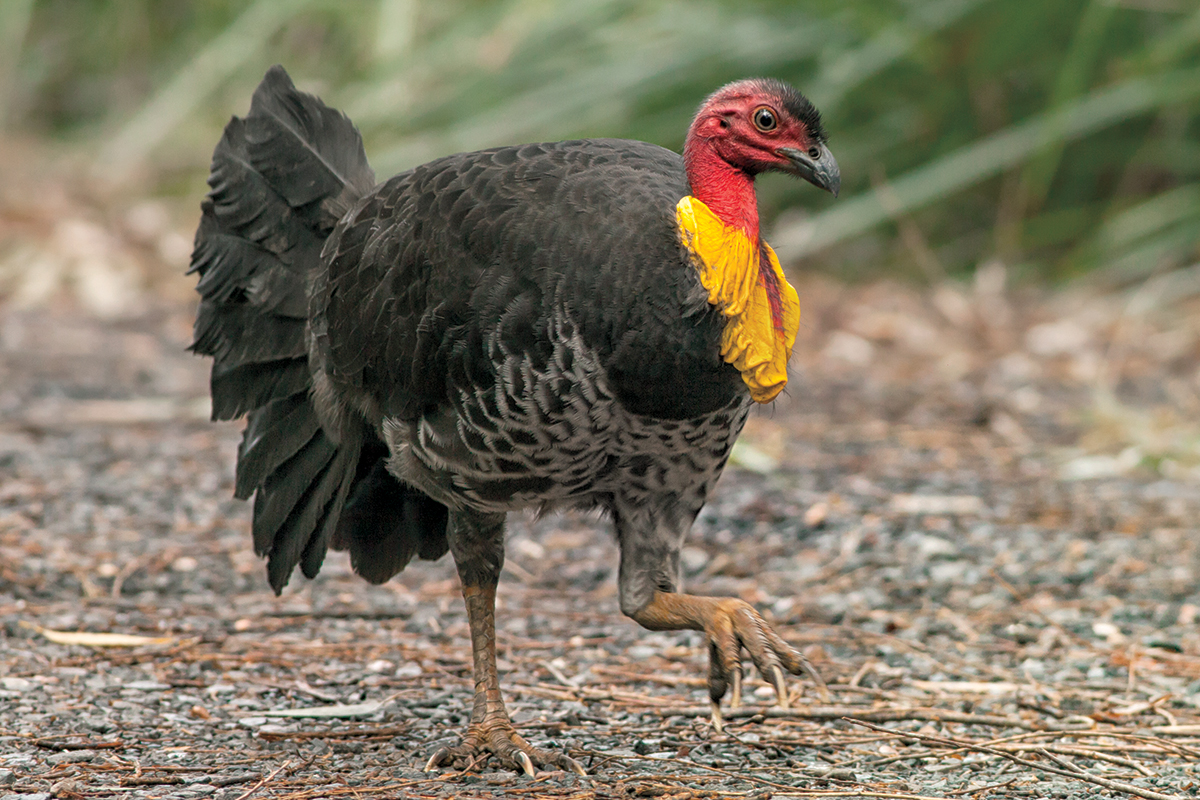
TURKEY WITH THE CLAWS
Australian brush turkeys are an ancient species that has different characteristics than other turkeys—like those impressive claws. (Credit: Belle Ciezak/Shutterstock.com)
Take the Country Road, at the Kangaroo Sign Past the Billabong
Walkabout Australia is designed to represent Australia’s rural landscapes and the animals, plants, and signs of human habitation encountered along backcountry roads. You begin your Aussie-style safari by leaving the main road where you see the Walkabout sign, reminiscent of a sign at a country petrol stop. It’s near the billabong—a marshy pond that fills up during the rainy season and provides water, food, and shelter for wildlife. No worries here at our billabong, but if you encounter one in Australia, it’s best not to wade into it—there might be crocodiles.
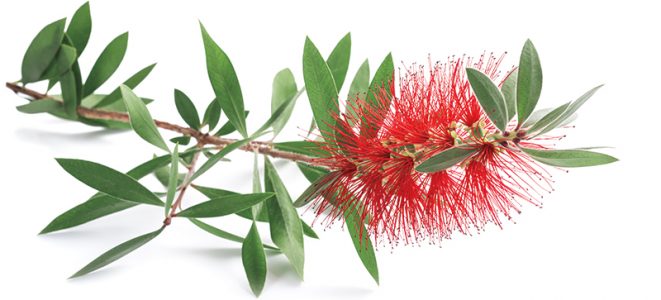
Australia is famous for having very large and arbitrary objects that show up alongside roads, from a giant lobster to a big banana to a looming pair of boots. At Walkabout Australia, an oversized metal kangaroo greets you. You can even pretend to be in her pouch for a photo. Then it’s down the road past blooming bottlebrush—an Australian native—and under the waving branches of the gum trees, a.k.a. eucalyptus. Along the way, look for an impressive bank of road signs that have a particular story to tell—in their own quirky style. And if you see a bright red, yellow, and black bird amble by, that’s one of the roaming Australian brush turkeys, an ancient native species whose egg-laying habits are more like a reptile’s than a bird’s.
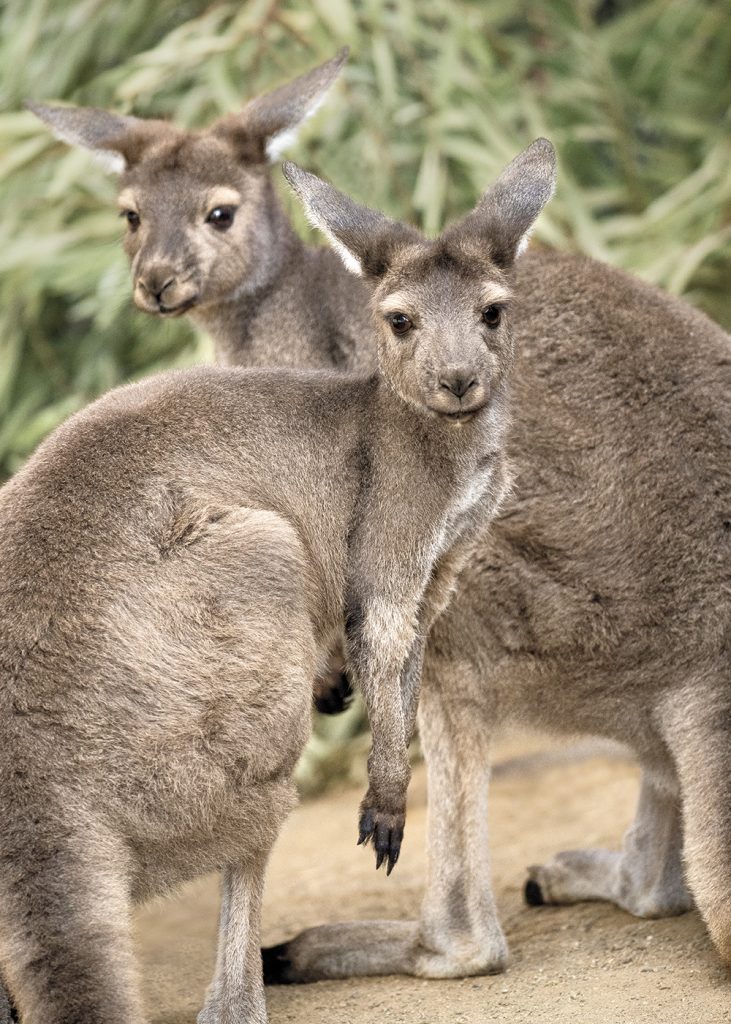
READY TO HOP
Western gray kangaroos are smaller than their cousins the red kangaroos, but they still have the famous, powerful back legs.
Encountering Bigfoot
Among the picturesque scenery, there’s a tumbledown stone house that beckons. Through its open doors you emerge into a meadow of macropods—gray kangaroos and red-necked wallabies hop, nibble, and lounge in the sunshine. Walking along the pathway into their grassy habitat, you may get quite close, especially if the marsupials are feeling inquisitive. This is probably the closest you will ever get to bigfoot: which is what the word “macropod” means. With their hopping gait, strong tail, large eyes, and sensitive nose and ears, there is much to discover about these social animals.
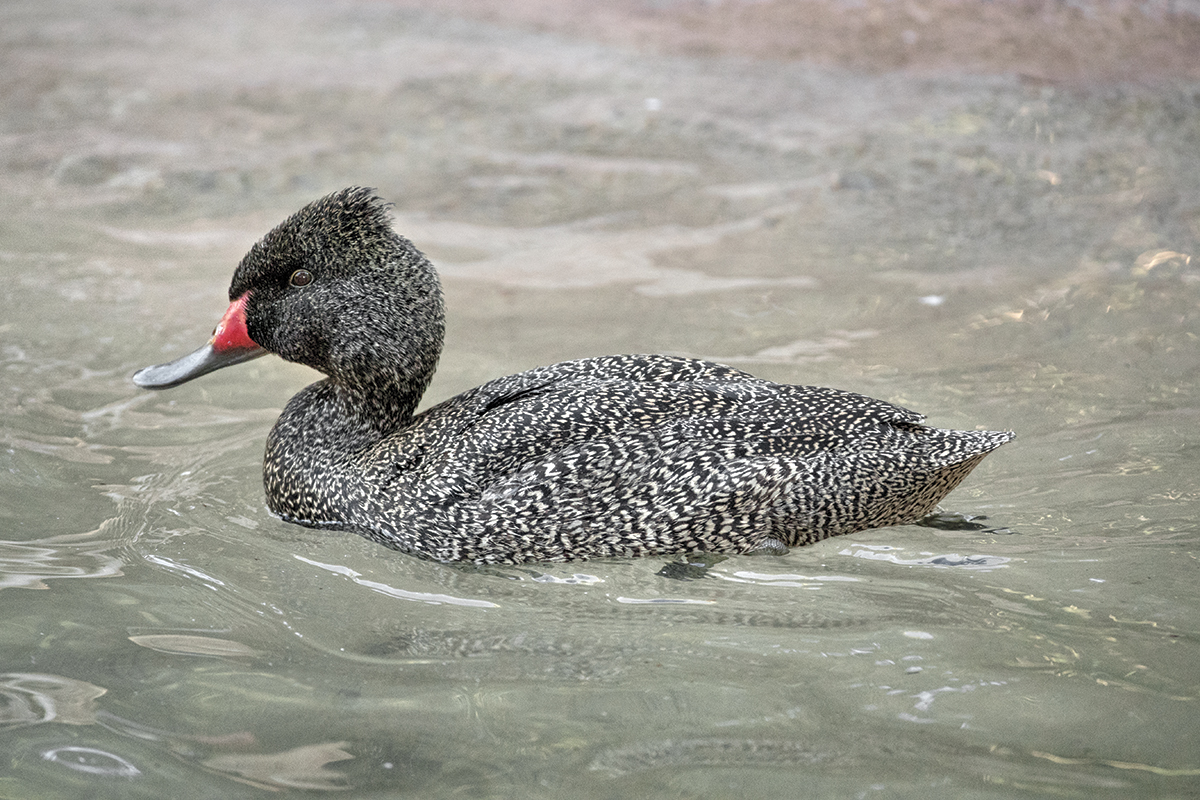
ON A MISSION—FOR DINNER
Freckled ducks eat mainly algae, aquatic plants, and small invertebrates.
Water Ways
In this time of changing climate, Australia—like California—is experiencing longer and more widespread periods of drought, along with an increase in frequency and intensity of wildfires. As a result, water is a more precious resource than ever. Walkabout Australia explores the vital connection between water and the animals and people that depend on it.
Leaving the marsupials behind, a cool rush of water beckons to a large pond where animals gather to drink, and waterfowl like radjah shelducks and freckled ducks paddle.
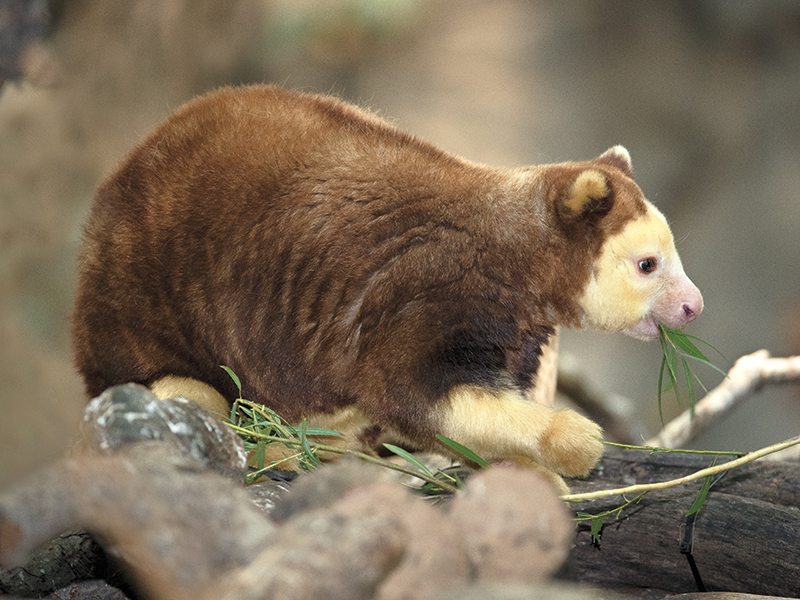
KANGAROOS IN THE CANOPY
With their long claws and hind legs that can grasp branches, tree kangaroos are at home in trees. (Location: Minnesota Zoo)
Humans rely on the water too. A water conservation tank, like those that might be used by local farmers or ranchers, demonstrates how collecting water during the rains can be a valuable source during dry times. A children’s area allows kids (and adults) to take a break and play in shallow, lapping water at the pond’s edge while watching the birds. At various times, you may have an opportunity to meet some other amazing Aussies: our Walkabout Australia animal ambassadors. A special area here allows keepers and educators to bring out animals like an echidna, a wombat, a woma, a sugar glider, or a blue-tongued skink and share their stories of life in Australia.

The waterway is at the foot of Walkabout Australia’s central gathering place: the Zuest Station, a building representing the wool shearing sheds found on Australia’s many sheep ranches. In this area, you can stop for a bite to eat and a cool drink, then take a look around to see artifacts from the long-standing techniques and traditions of wool production practiced in Australia for more than 200 years.
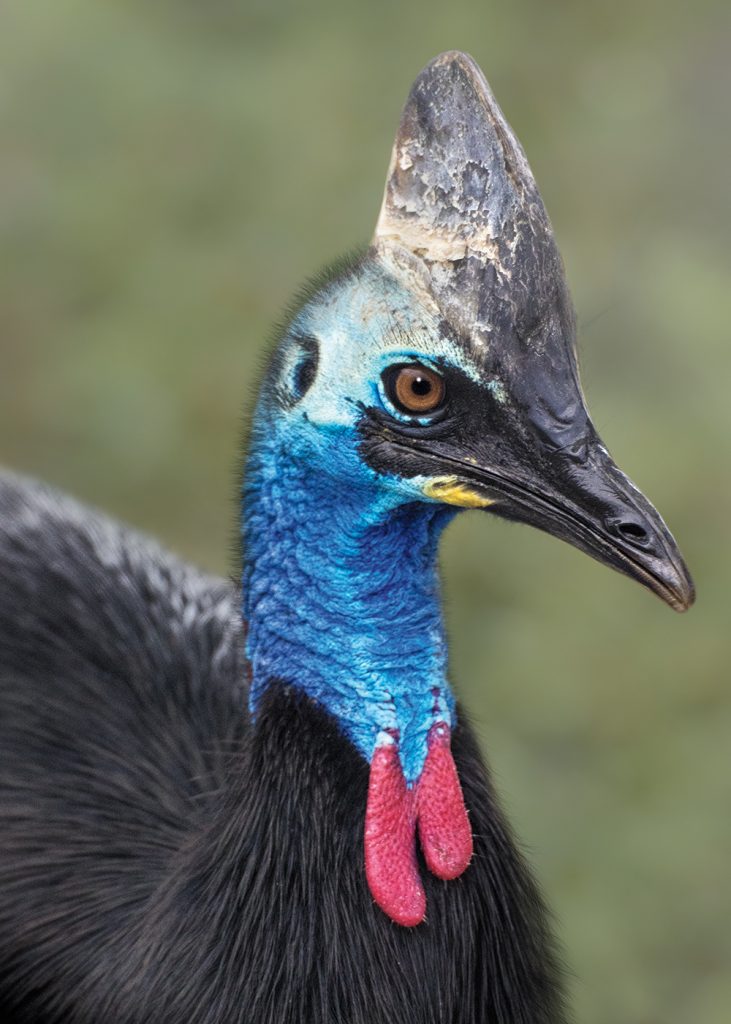
SPIFFY IN DOUBLE WATTLES
The purpose of the cassowary’s brightly colored neck adornments is unknown. Perhaps they signal the bird’s mood or some other social cue that only the birds know for sure.
Be Wary of the Cassowary
On the way into Zuest Station and from the floor-to-ceiling glass viewing window inside the building, you’ll get a glimpse of Australia’s rain forest habitat as you watch, at eye level, another extraordinary species: a kangaroo that evolved to live in the trees. Matschie’s tree kangaroos have some things in common with their land-living cousins, but they developed strong limbs and gripping claws to take advantage of more plentiful light, food, and safety in their arboreal world. These kangaroos may not hop, but they can leap—up to 40 feet from tree to tree, in fact.

Staying up high might be a wise strategy when a formidable hunter stalks below: the southern cassowary, a five-foot-tall, flightless bird with a casque on its head, a pointed beak, and tough, scaly legs and feet that harken back to the dinosaurs. Truth be told, cassowaries are mainly hunting for fruits and fungi on the forest floor, though, not a hefty mammal like a tree kangaroo. But the cassowary didn’t get its nickname of “most dangerous bird in the world” for nothing. This bird has an elongated and razor-sharp claw on each foot that can slice an impressive gash in any potential predator, including a human! You’ll be well out of claws way, however, as you view two cassowary exhibits outside of Zuest Station.
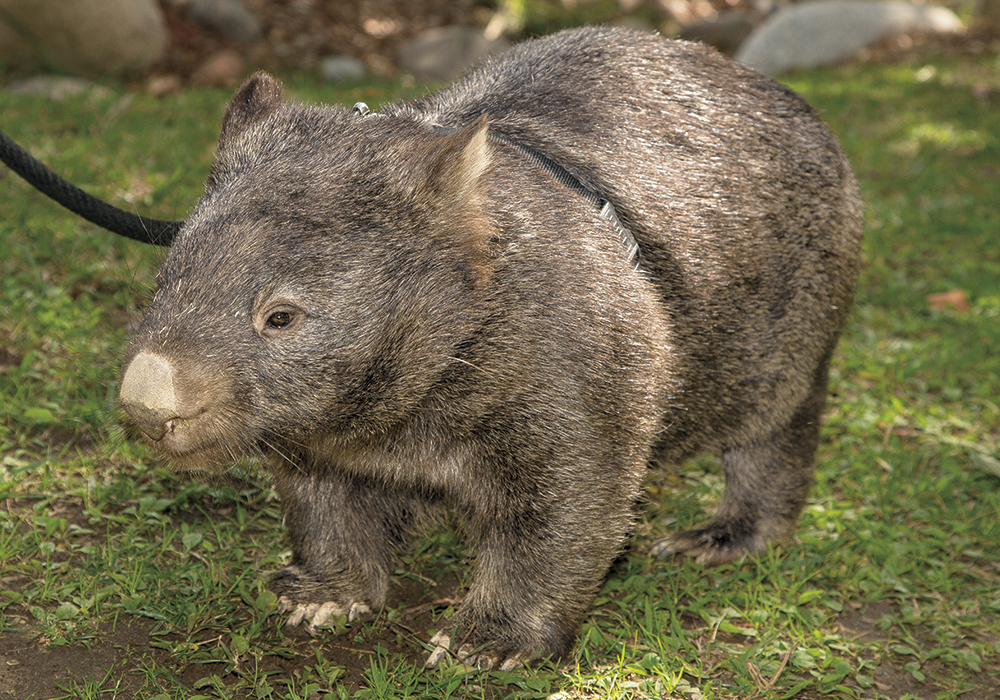
WOMBLING WOMBATS
You might meet a common wombat at the Animal Ambassador area. These compact marsupials are related to koalas, but spend their time on the ground and in burrows rather than in the trees.
Arid Australia
The largest proportion of Australia’s human inhabitants live along the outer part of the continent—for good reason. Australia’s interior and western deserts are legendary for their hot, dry, inhospitable conditions. It takes a hardy, specialized human, animal, or plant to make it there. And some do! To experience a bit of their world, take the bridge from Zuest Station out to the arid desert, where you’ll encounter replicas of the huge boulders referred to in Australia as the “Devil’s Marbles.” From here, you have a beautiful view of the water-wise plants in the Old World Succulent and Baja Gardens—which might inspire ideas for your garden.
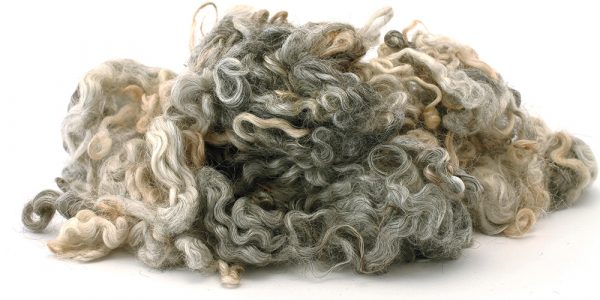
Rest and Relax at Zuest Station
Your walkabout will take you to Zuest Station, a building representing a wool shearing shed like those found on Australia’s many sheep ranches, which locals call “stations.” Shearers and roustabouts (temporary or seasonally hired workers) would give the flock its annual spring haircut at the station, and prepare the sheared fleece for market. For instance, you may have heard of merino wool—that’s a prized product from Australian sheep.
Take a look around the themed building to discover the traditions of wool production in Australia. See the difference between raw and processed wool and the tools used to turn fleece into yarn. Check out the decorative cabinets for wool combs, spindles, and skeins of yarn, and look for spinning wheels and looms that are used to turn yarn into fabric. At times, a volunteer may be on hand to show you how a spinning wheel works.
The Station has a “ridgey-didge” design (Aussie-speak for “the real deal”) and is an excellent vantage point for viewing tree kangaroos. However, because diseases can be transmitted from livestock to exotic animals, you won’t find sheep here, in order to keep the Safari Park animals safe. But you will find a cool place to stop for a bite to eat (care for a sausage sizzle?) and an icy cold drink—including beer, if you’d care to blow the froth off a couple at The Sheared Sheep bar.
The Station is also available as a unique venue for weddings and special events. Our events staff can enhance the Station’s rustic charm with upscale elegance and décor (plus the building can be air conditioned), creating the perfect ambience for your memorable gathering or celebration.
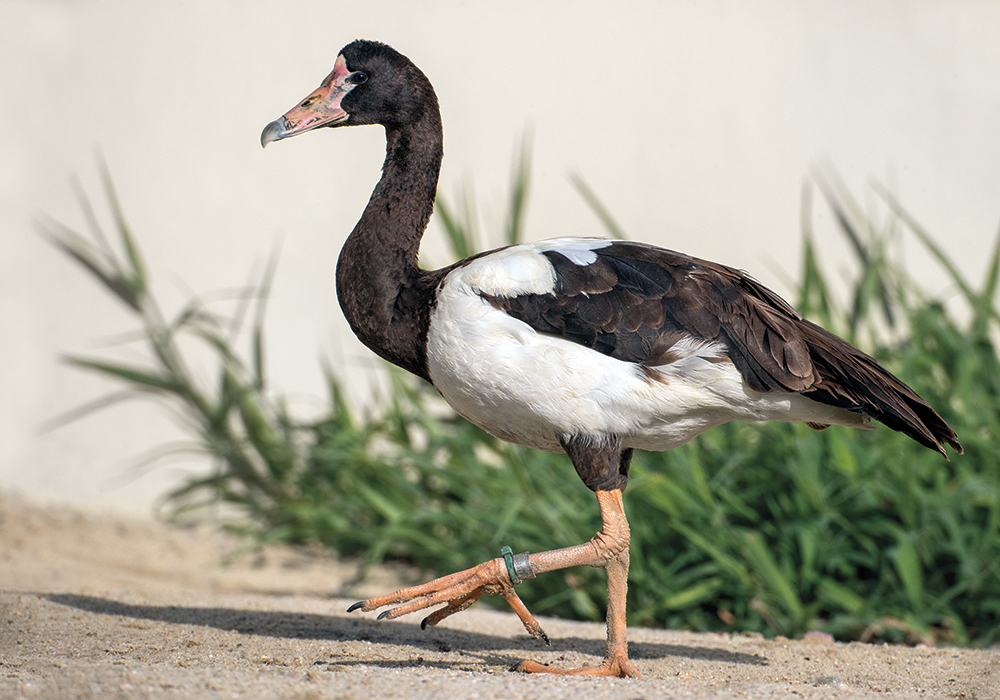
SERIOUS STRUT
Wandering with the macropods, magpie geese show off their partially webbed feet, an unusual characteristic for a waterfowl species.
Until Next Time
Your Australian journey at an end, you can choose another part of the Safari Park to explore. But no two walkabouts are the same. Another adventure here will bring fresh discoveries and insights about the unique species that call this place home; how they interact with the humans that share their world; and the challenges they face in finding water, food, and shelter in a changing environment. First visit or a return, Walkabout Australia continues to unfold with more to reveal.
(Top photo: Location Minnesota Zoo)

